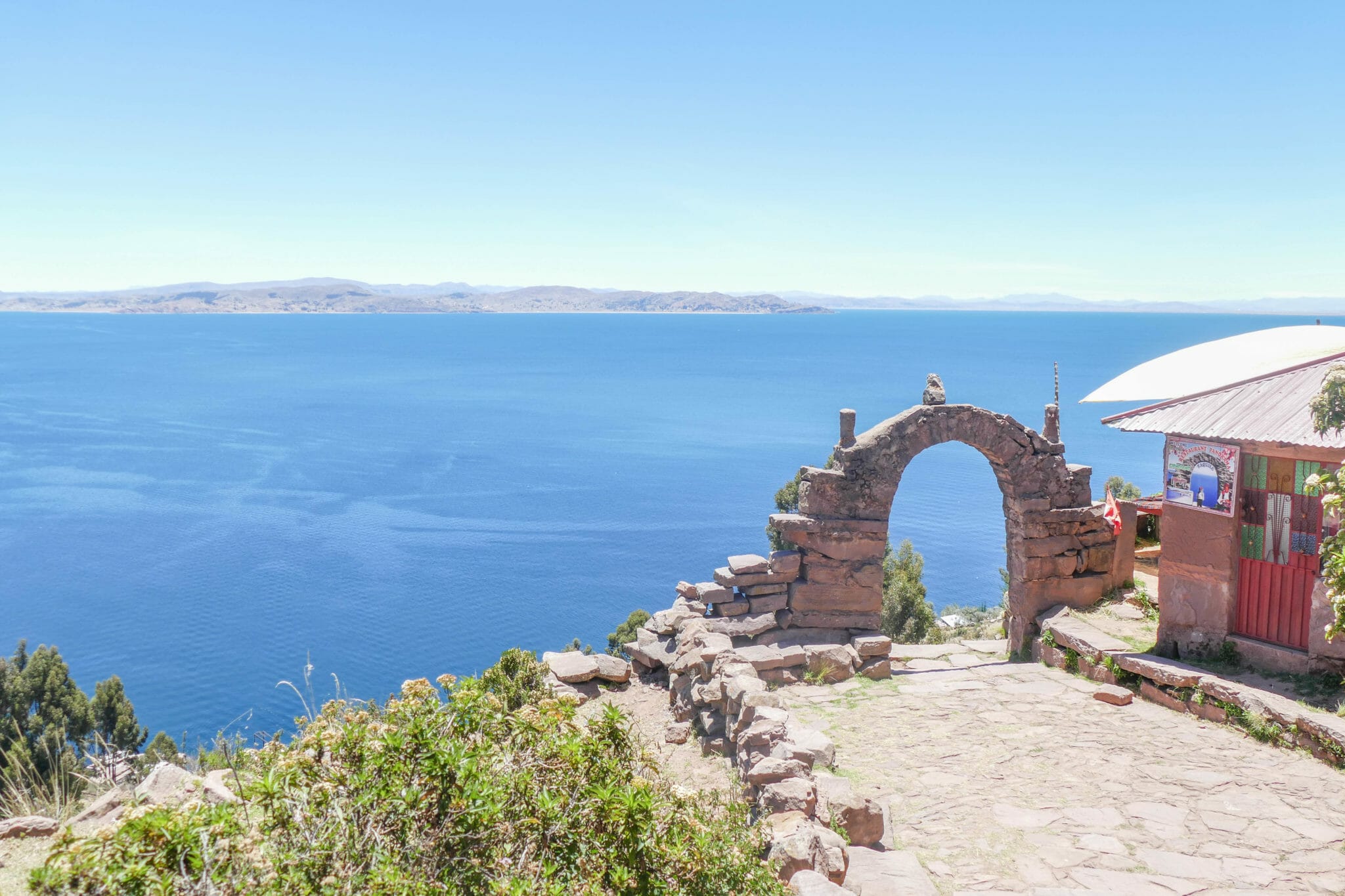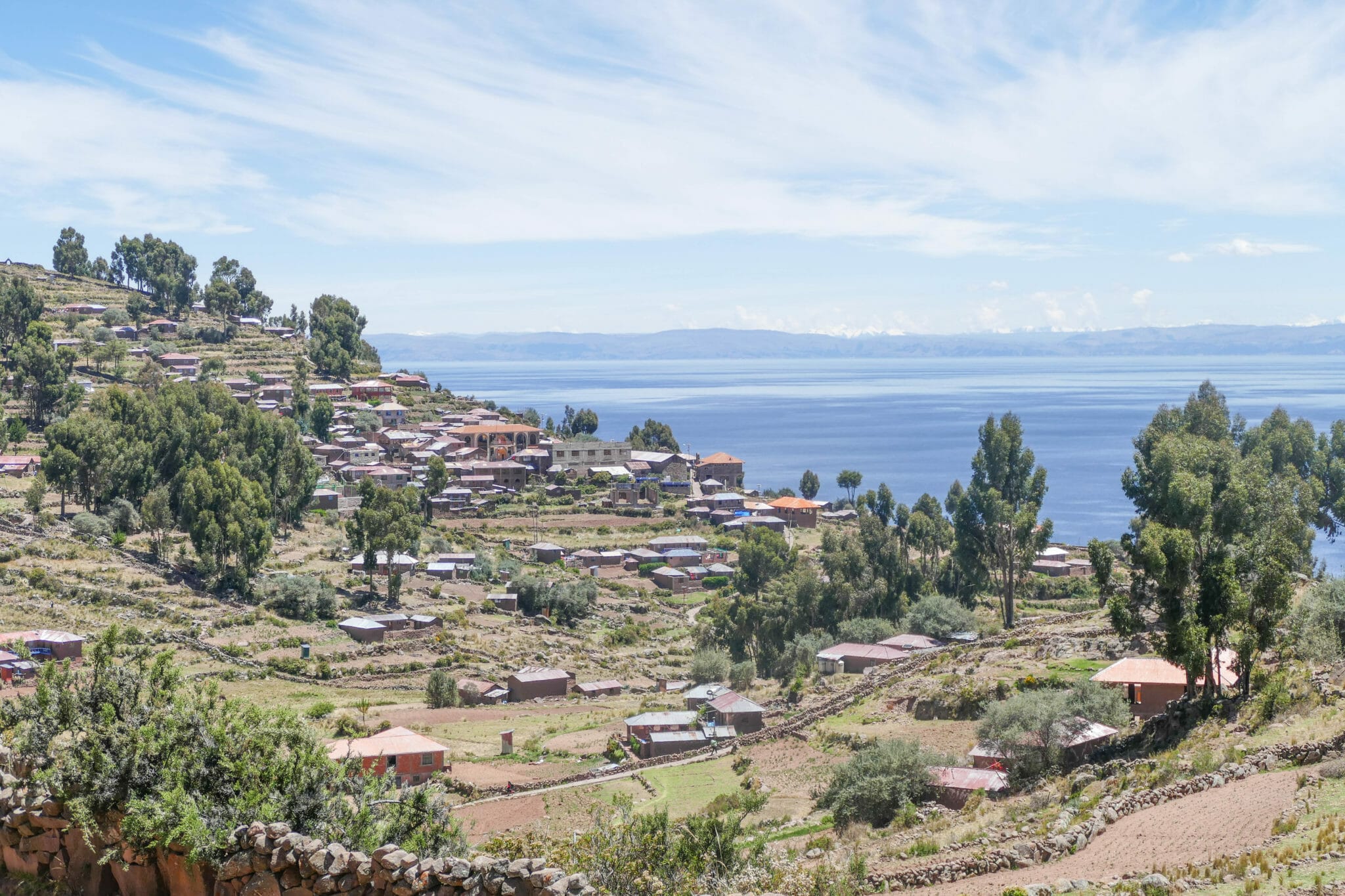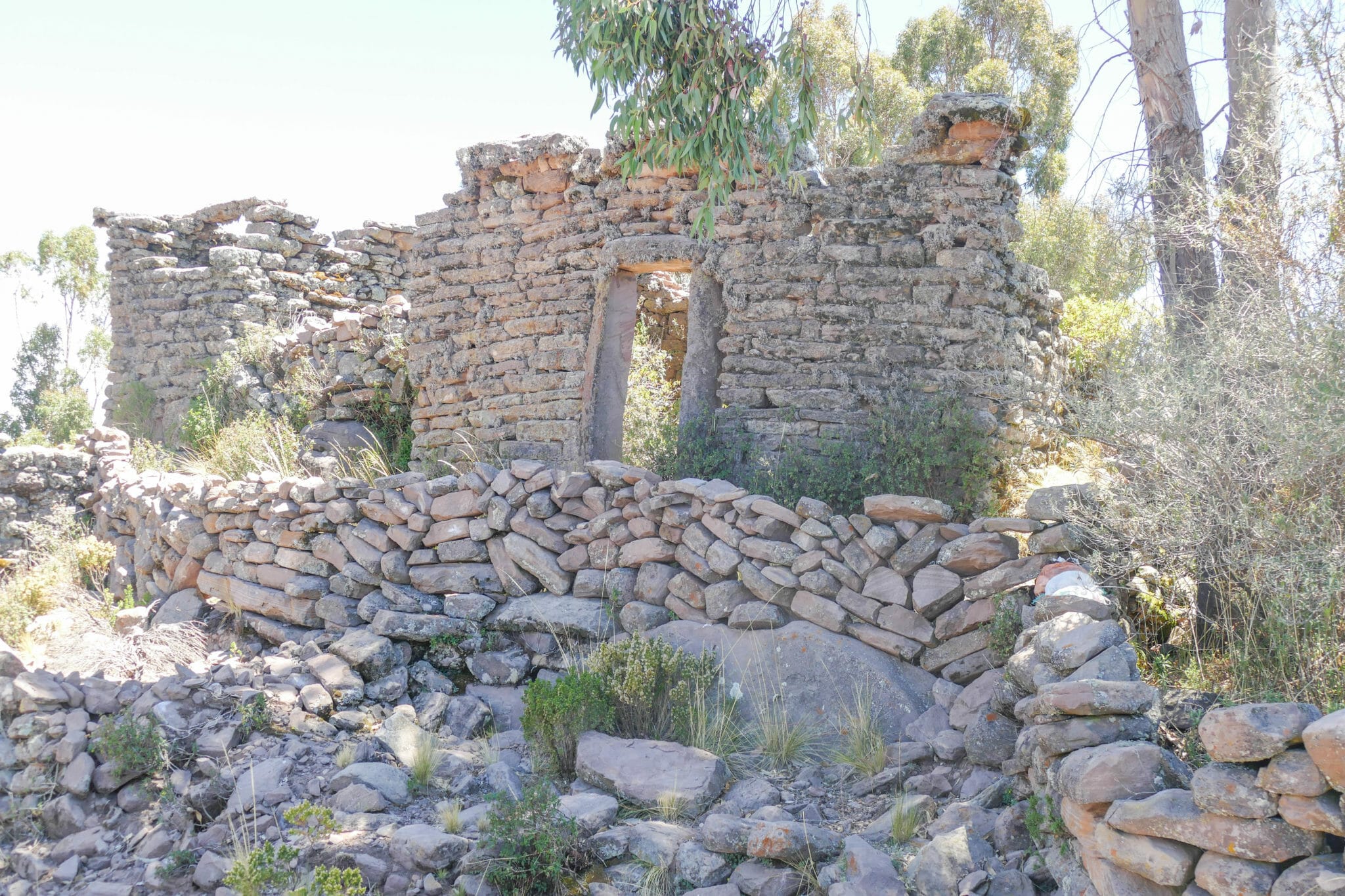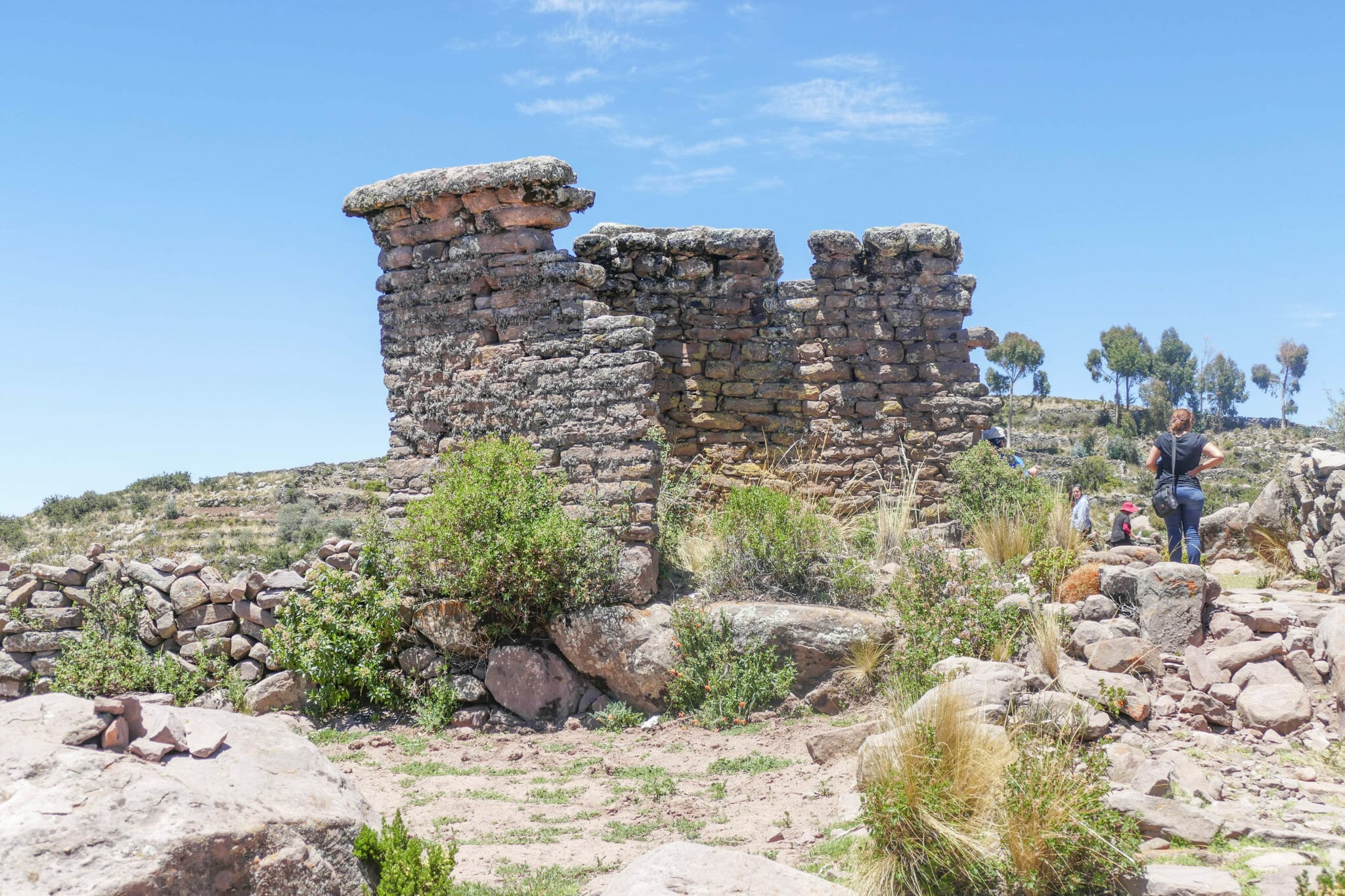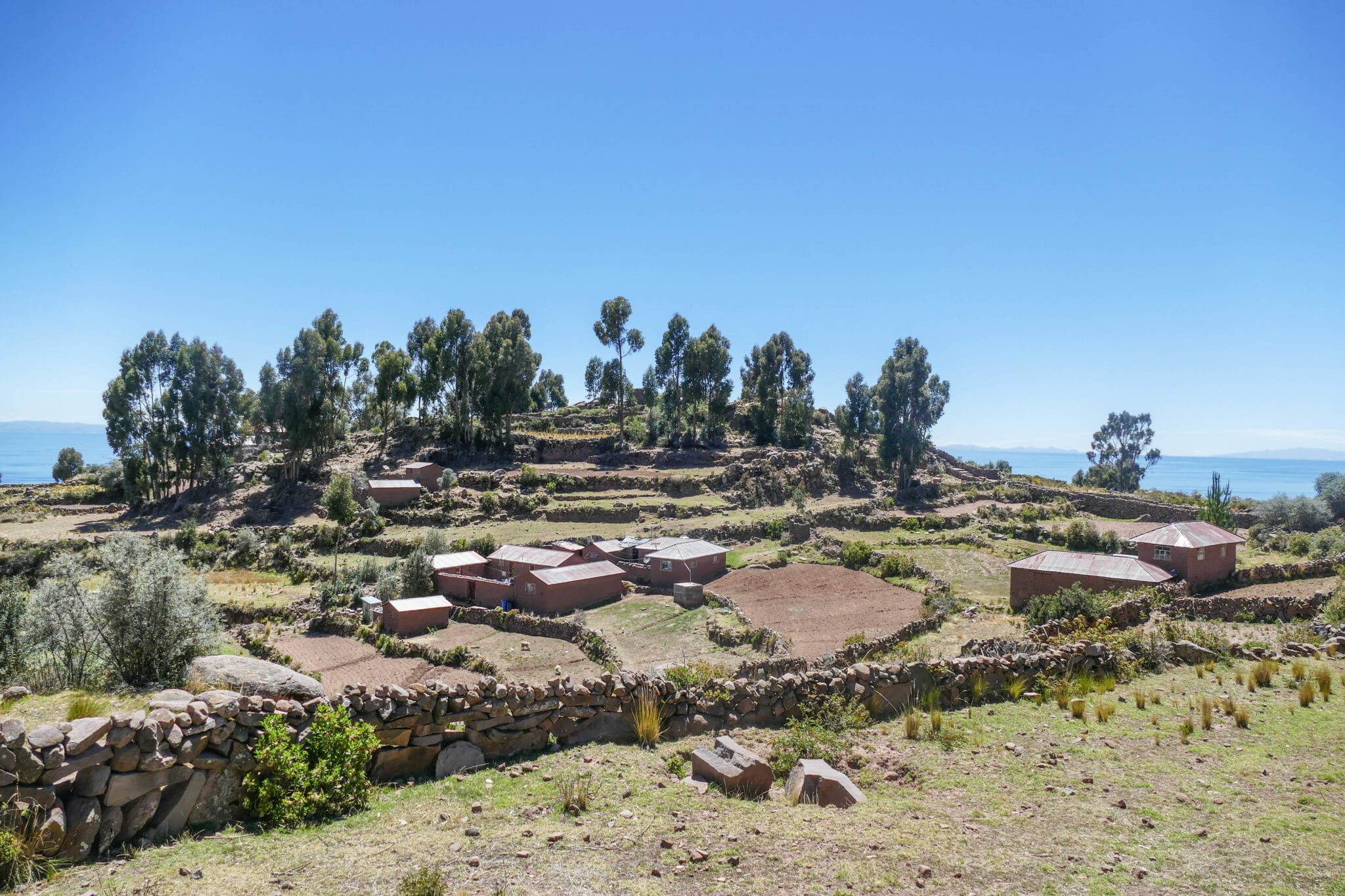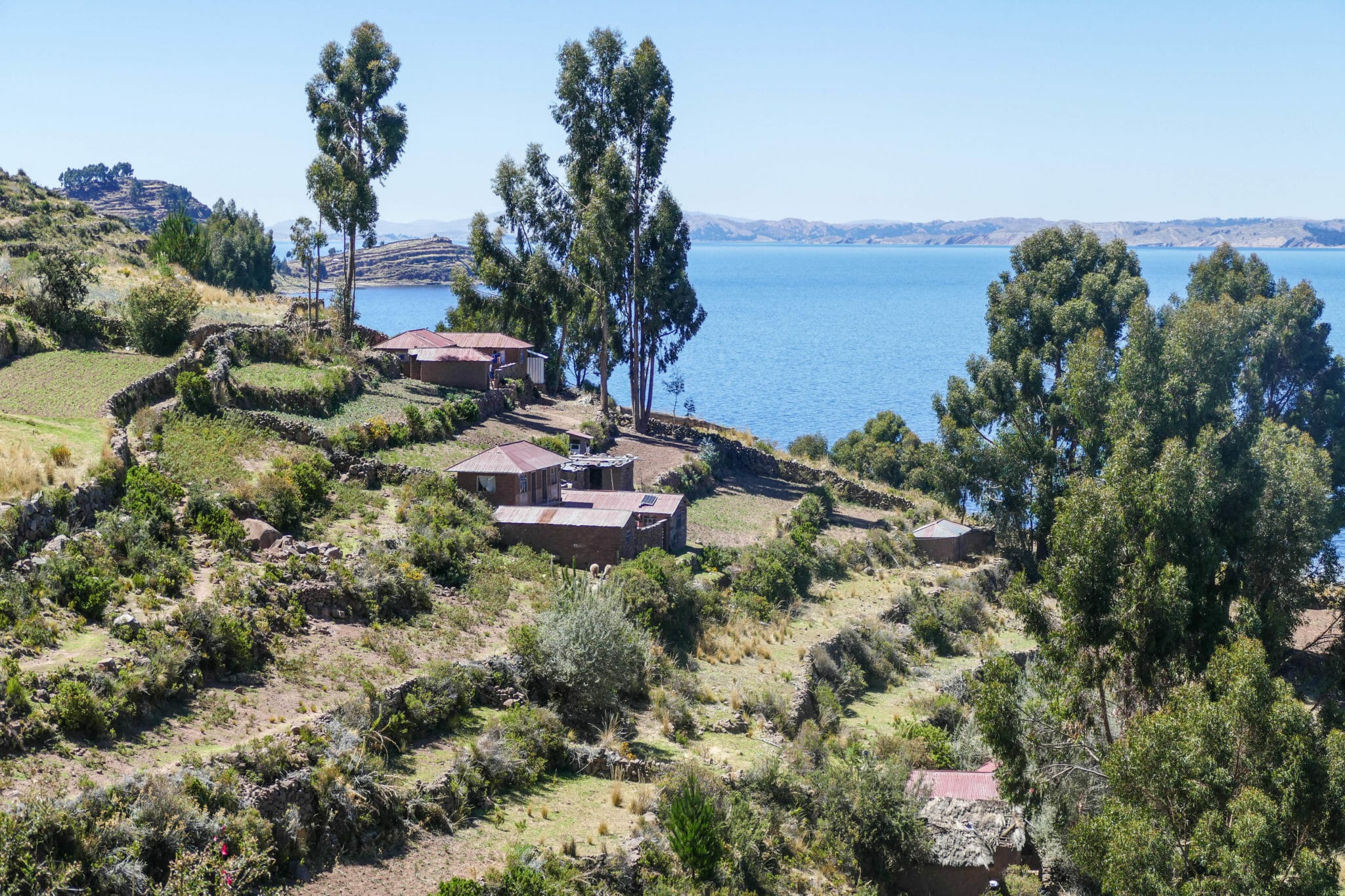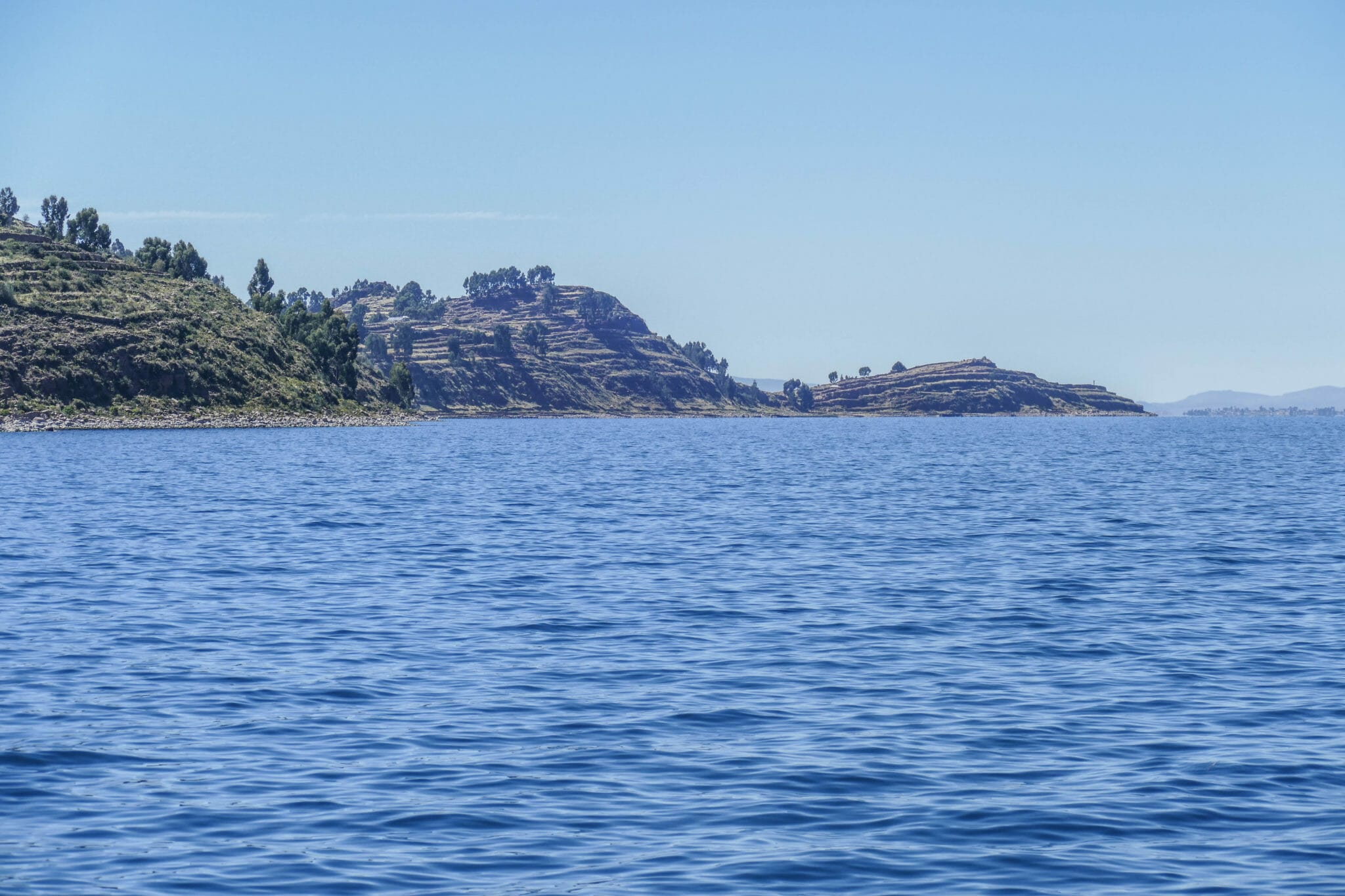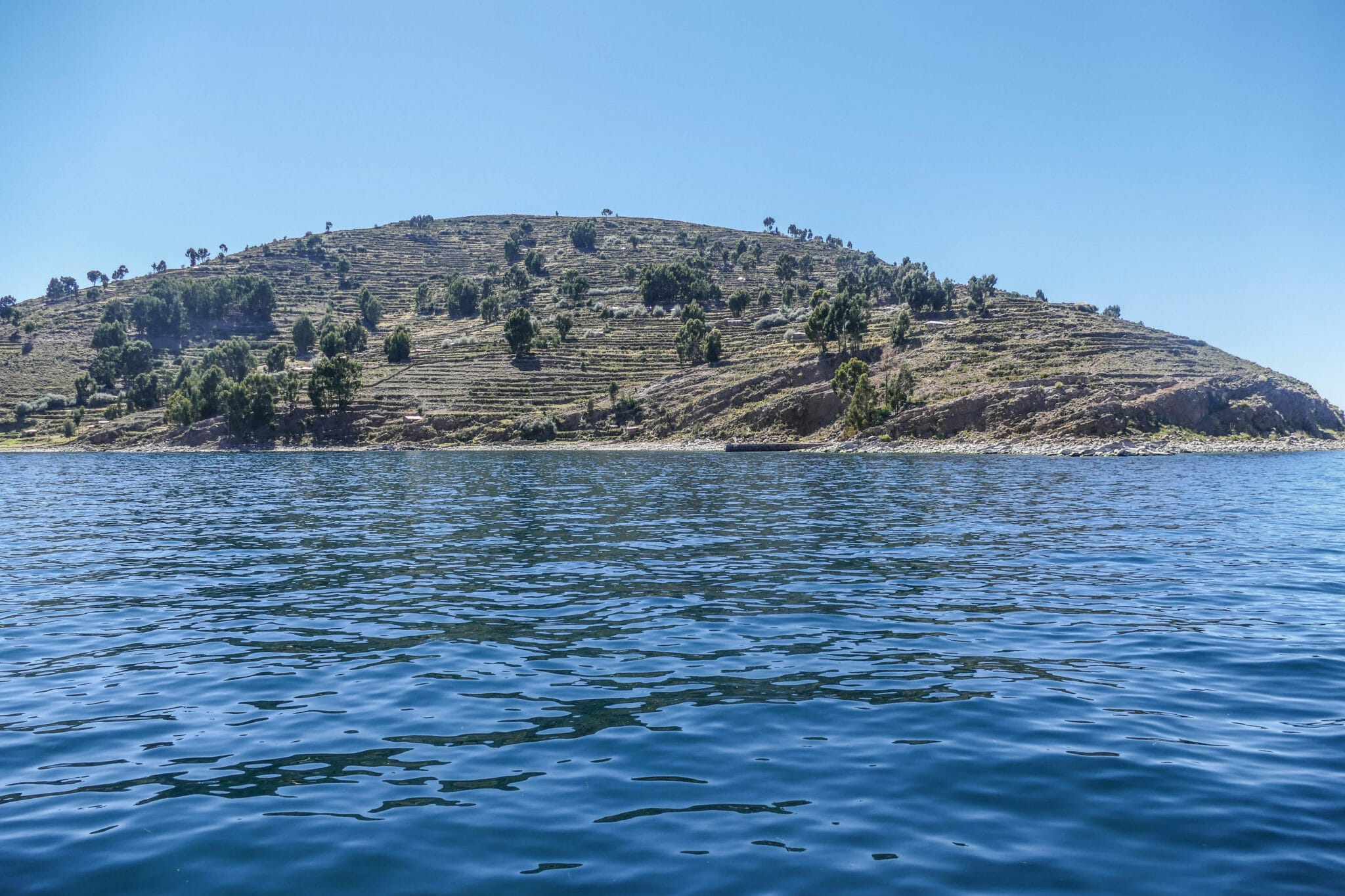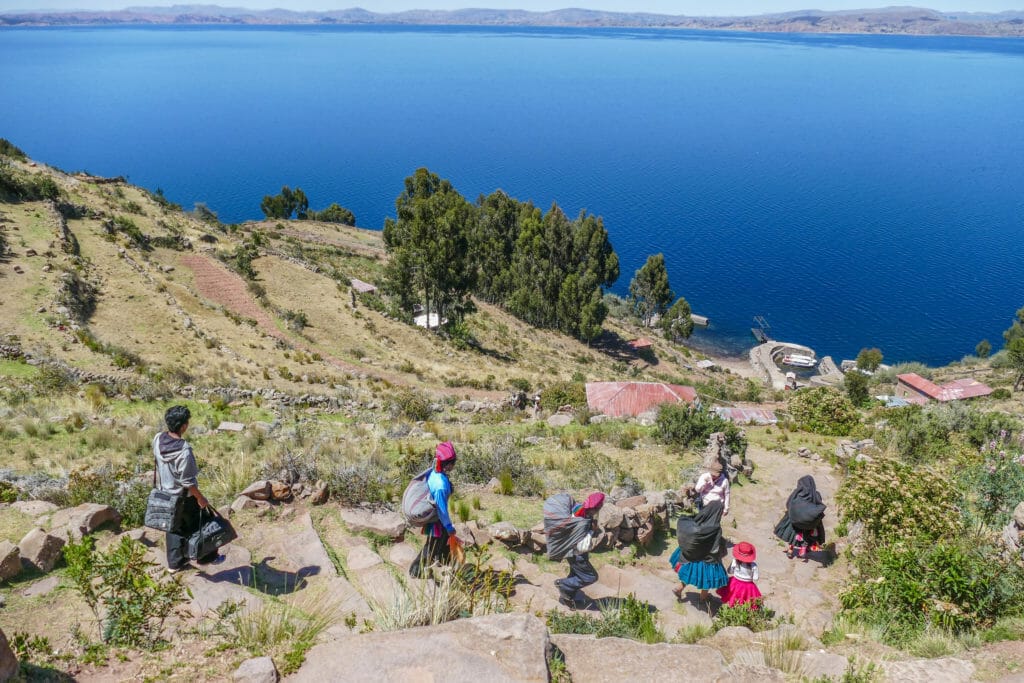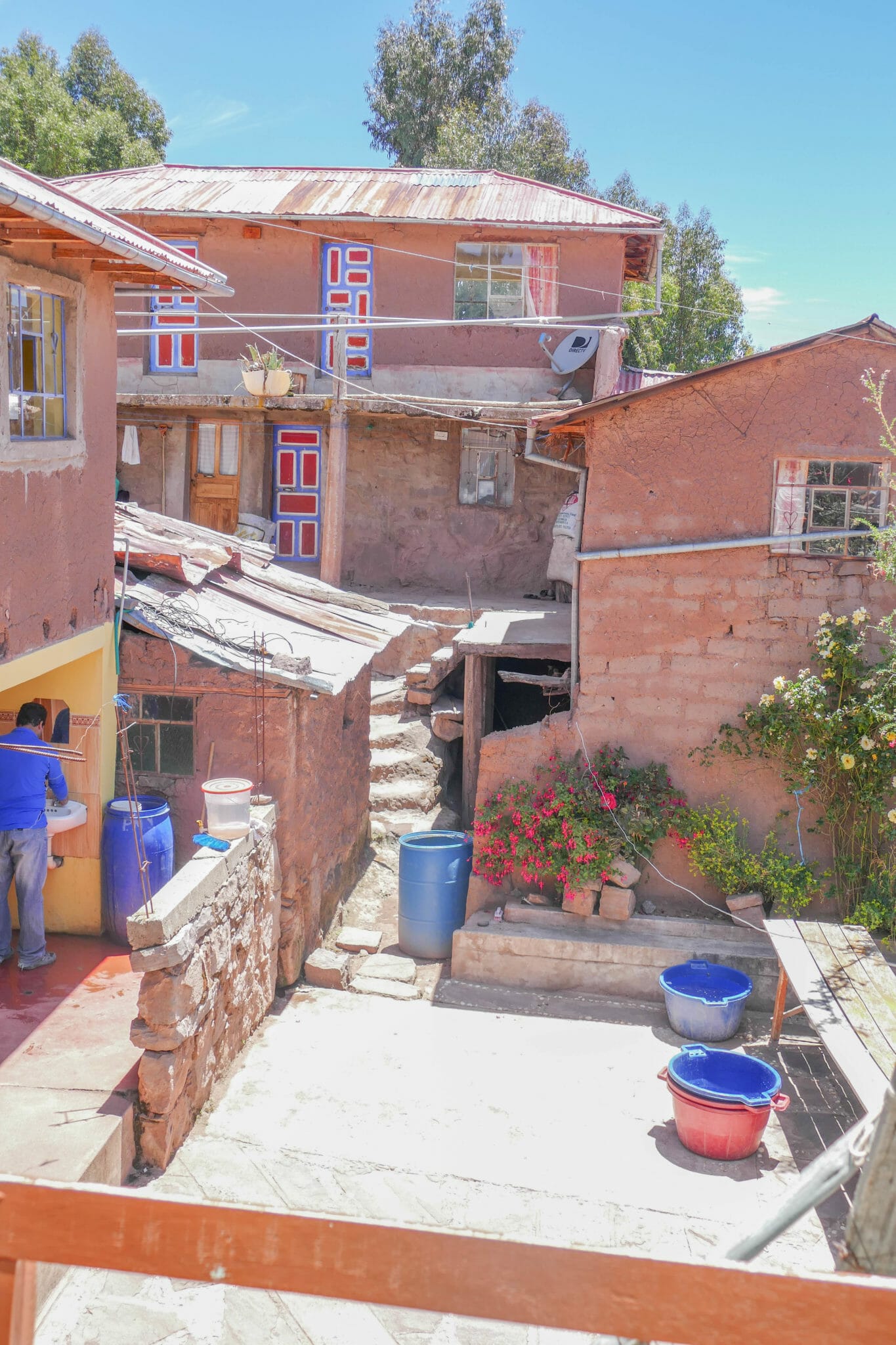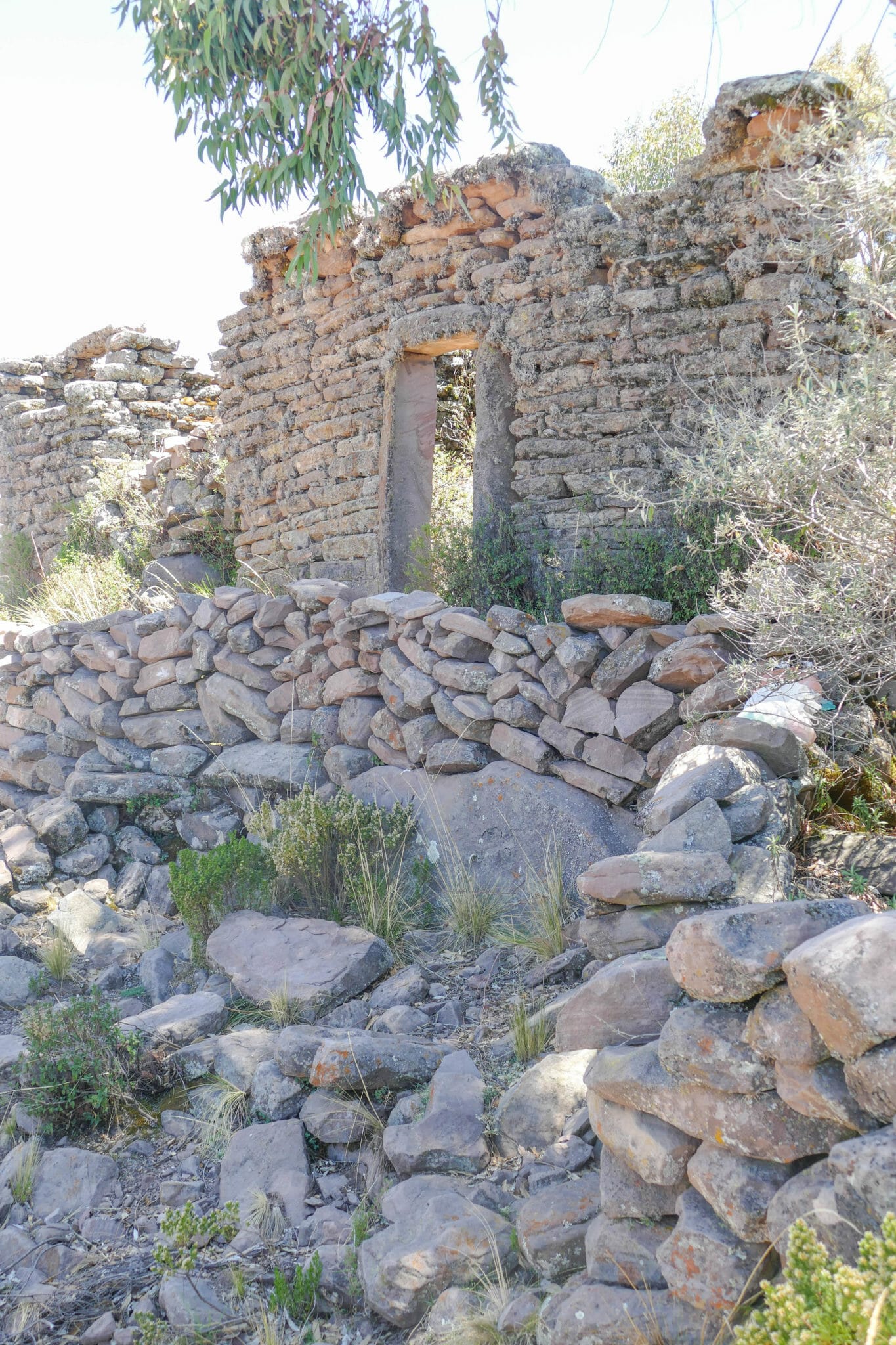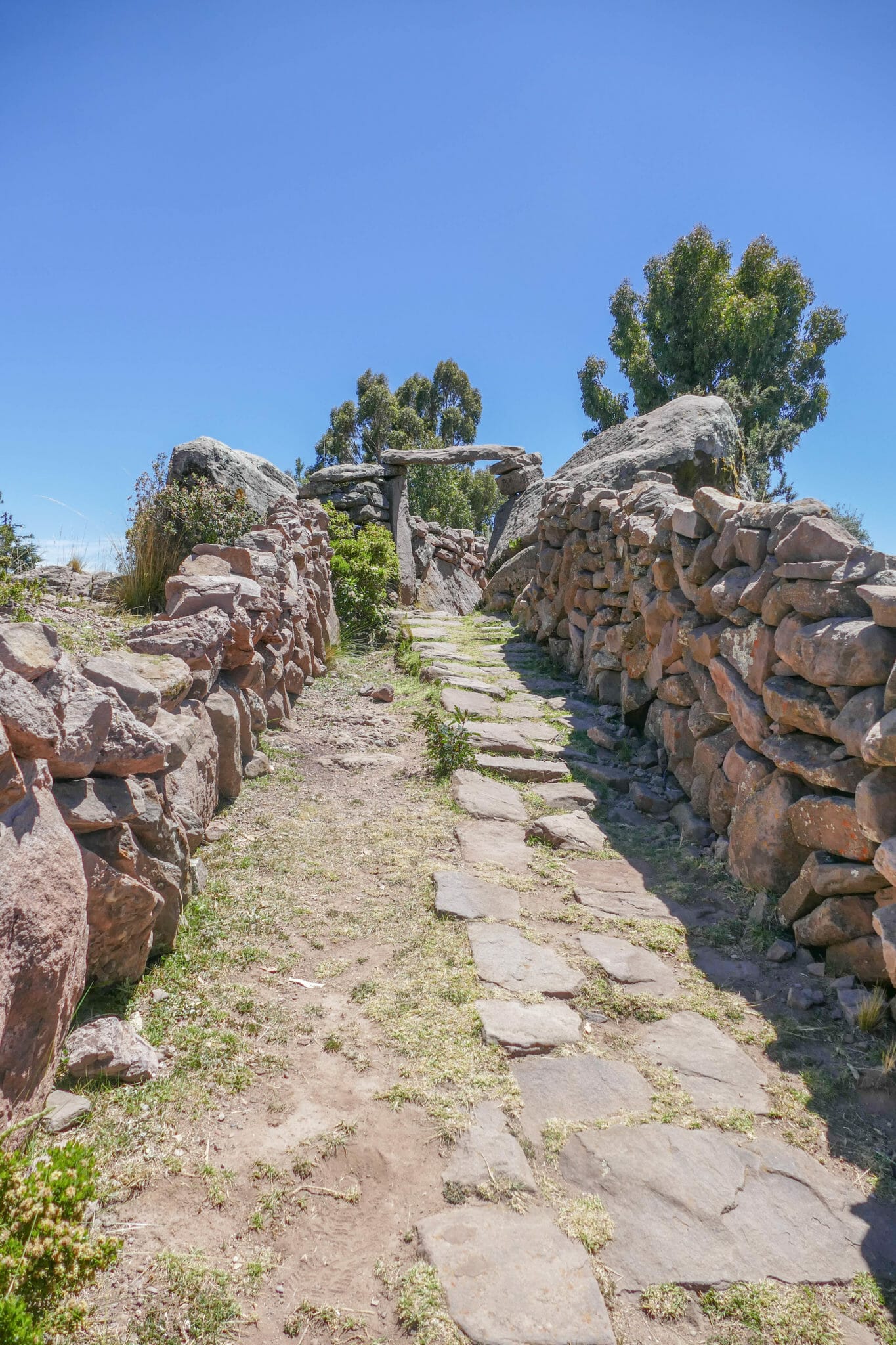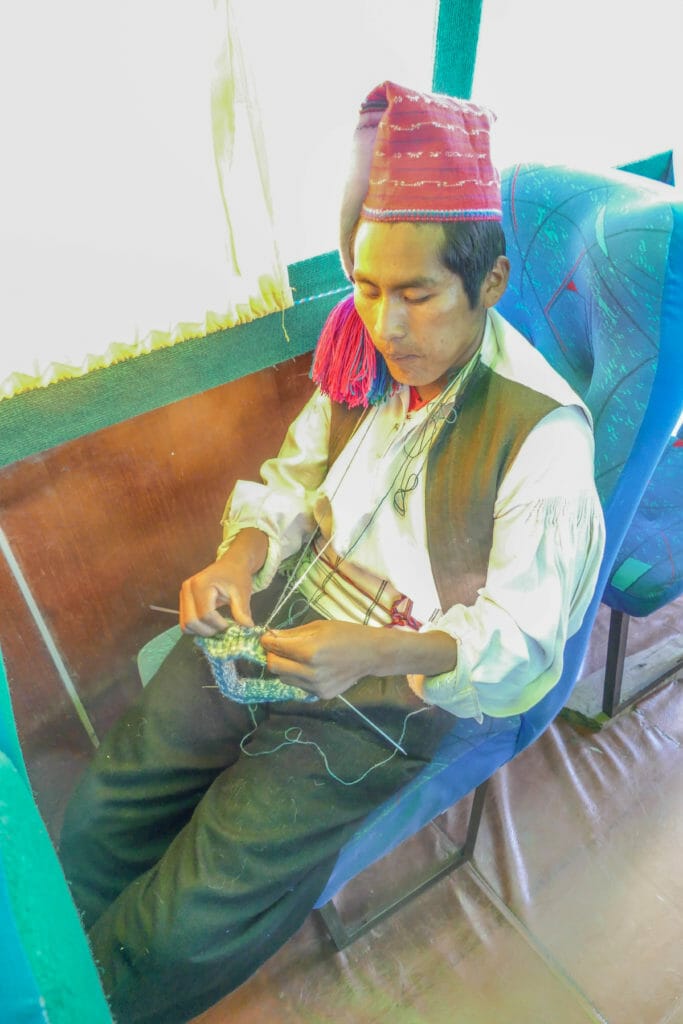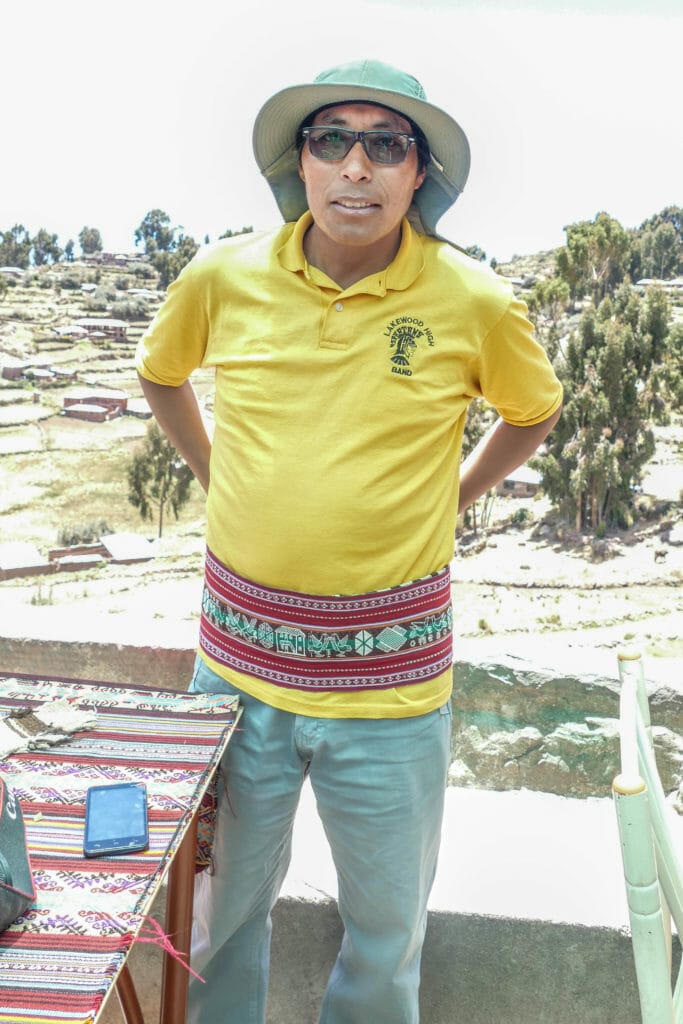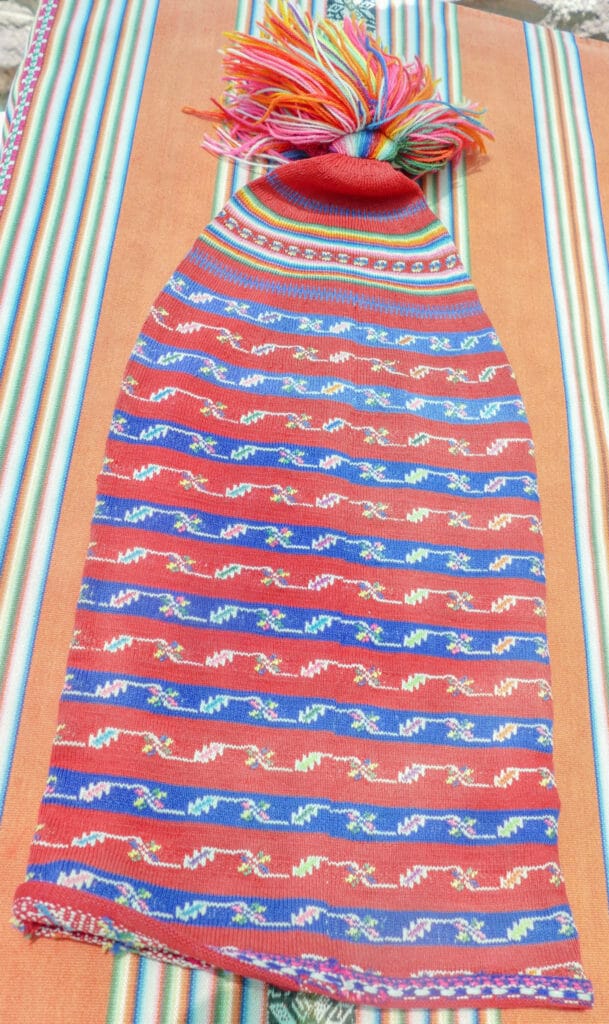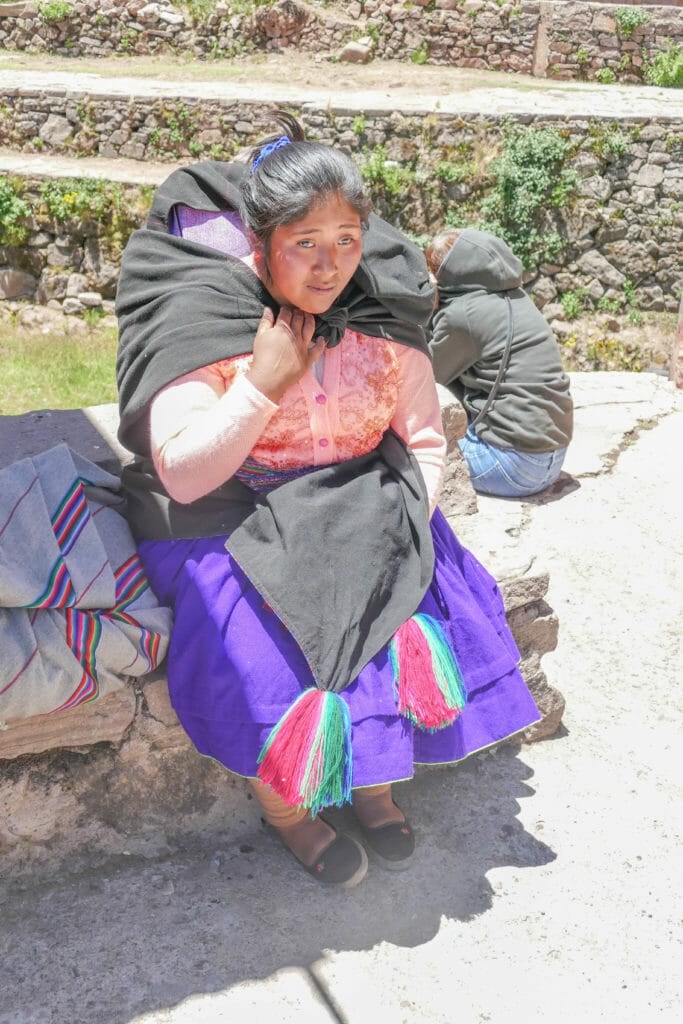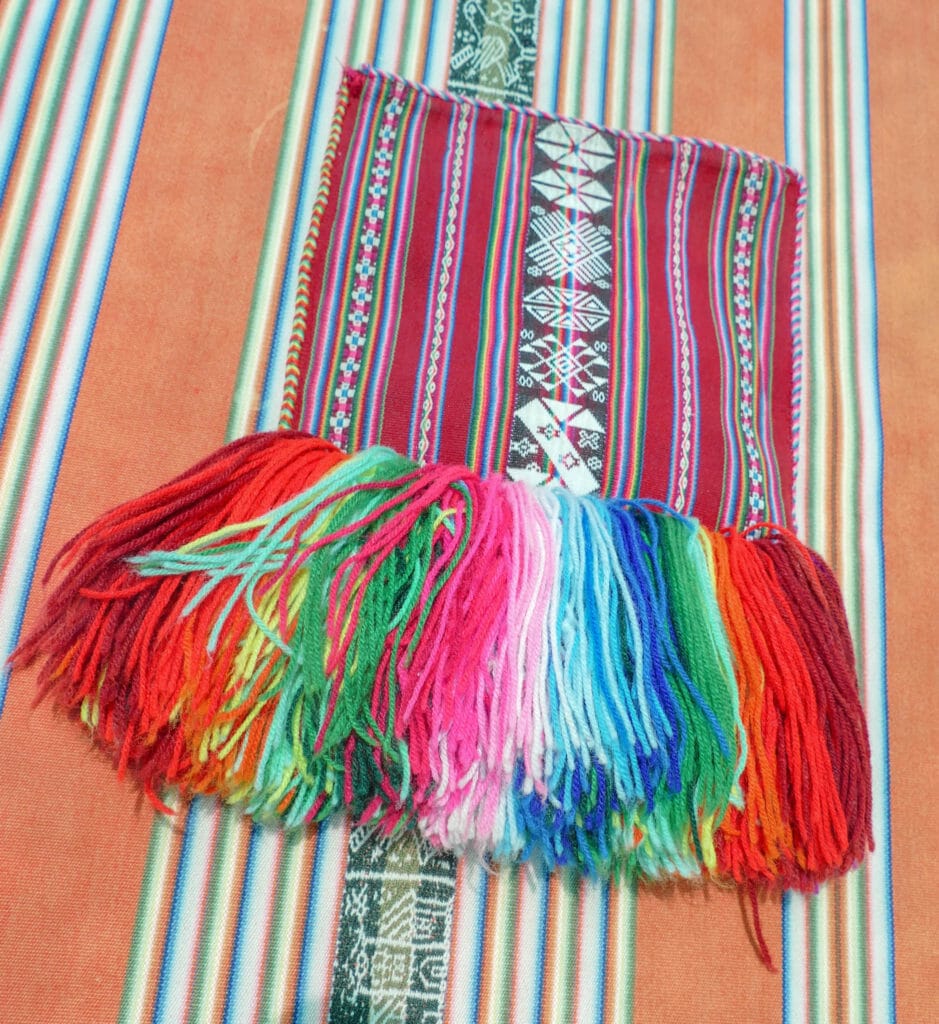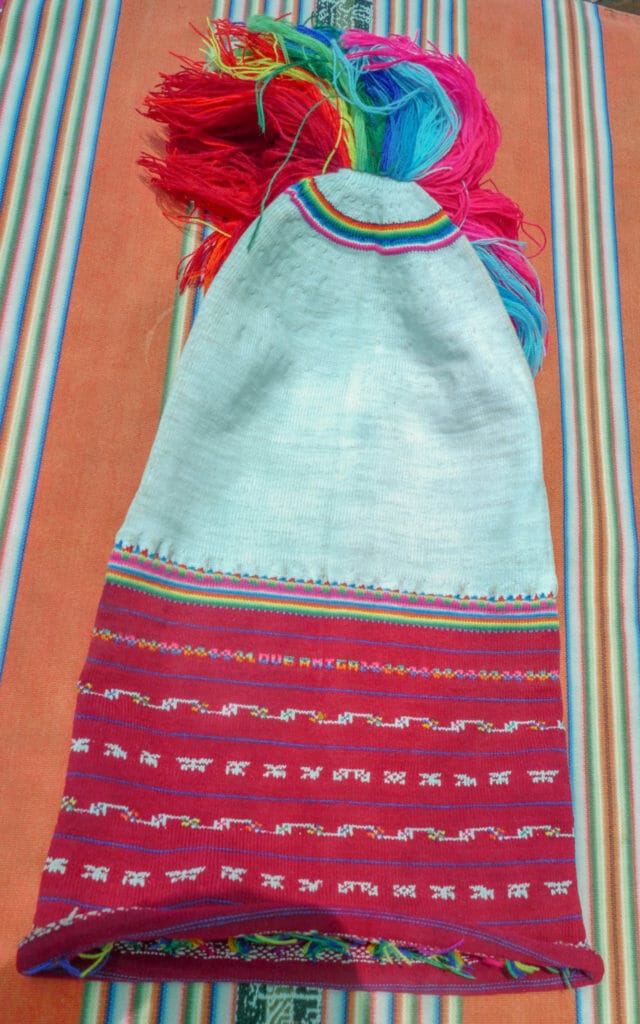Taquile Island on Lake Titicaca is not only beautiful, but also the home to an enduring culture that worships the moon and keeps to traditions
As you approach Taquile Island’s shore you feel like you are about to become part of a picture postcard. Blue water, skies bluer still, stone paths leading ever higher, flowering cantutas, the national flower of Peru with nutrient-rich nectar we had learned to drink on nearby Isla Amantani.
For those of us still acclimating to Lake Titicaca altitudes, the 3970 meter climb to the Moon temple at its summit can be challenging. This writer, with the help of our guide, discovered how to snip off muña sprigs, for a sort of menthol courage that invigorates your next step on the climb.
As you ascend, natives descend towards places where they work, school children go to school, and around you neatly arrayed and maintained fields seem to broadcast their fertility. It feels at once everyday and exotic—but above all beautiful.
Eucalyptus trees are everywhere, but you learn these are relatively recent weed trees brought to Taquile from Australia about 35 years ago before their negative impact on agriculture was fully understood.
We learned that the island has six communities with a population of about 2500, following pre-Inca Aymari customs, though they speak Quechua.
Taquile Island Moon Worship
At the summit of the climb is a Moon Temple, still pressed into service from time to time. This is a moon-centered culture, which follows the moon’s rhythms making sacrificial offerings at certain moon cycles or ceasing work on others (New Moon). It’s a bit confusing to learn that one of the primary schools is 7th Day Adventist. Then again, to be anywhere in Peru for just a short while is to learn that the 85% Catholic statistic only tells the start of the story. Religion is a mescla almost always.
Customs Maintained
The enduring customs of dress among the island people are perhaps the greatest curiosity.
How they accessorize tells you at a glance if they are younger or older than 15 years, single, married, or a current or one-time office holder.
Young men looking for a girlfriend will flop their knit cap to the right or the left; married men wear hats of red and blue with flop direction being of no import. If a man sports brown on the top of his hat it means he is or was a mayor. Women wearing very colorful shawls are unmarried; those wearing darker colors are married.
One learns that only men do the knitting—starting at a young age. Women do the weaving.
Others might be able to sense subterranean currents, but on the surface Taquile seems to be about as hetero-normative as a culture could possibly be. Those of us coming from larger cities might find a part of themselves cringing at the thought of what it would be like to be gay or trans in such a place…
…at least for the foreseeable future.
Click here to read more Picture this Post travel stories by Amy Munice with photography by Peter Kachergis.

